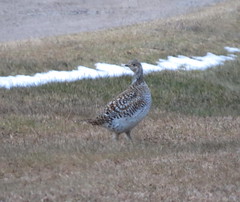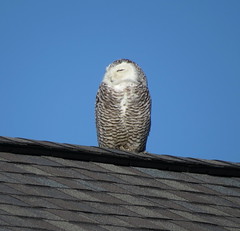Hilton Head Island/ Pickney Island N.W.R./Savannah N.W.R.
A much needed family vacation with a lot of birding mixed in. That’s what the doctor ordered, and who am I to argue with a doctor.
Leaving at 4 am this will be the farthest I’ve traveled for an official “on the road” bird trip, and I’m so looking forward to it. The drive was uneventful as it took 12 hours to make it despite stopping for lunch, gas, and the regular pit-stops. The scenery through the mountains was nothing but spectacular as they were in their full Autumn splendor. The stretch from Knoxville to Ashville to Spartanburg S.C. was a curvy, mountainous treat for the eyes.
After arriving we had the customary unloading of the car, looking through our condo for the week (which was awesome) then paying our respects and saying hello to our host for the week, the Atlantic Ocean.
Fish Haul Creek Park was my first destination for the week. At the northern point of the island, this combination of coastal forest and salt marsh, borders the ocean.


A gazebo was built out into the vast saltwater marsh.


A nice wide trail meanders through the woods from a large parking lot, which includes restrooms and has security cameras mounted throughout the lot. This trail finally ends at the ocean, more or less, depending on the tides.
 At high tide all of the sand in the distance would be covered.
At high tide all of the sand in the distance would be covered.

A Great Blue Heron with some flat fish he just caught.
There were birds everywhere! As the tide recedes, there area just opens up with exposed sand bars that attract birds from all over. And only 20 minutes from my condo. I found more life birds in this one area than I’ve ever found in anyplace else. That’s why I returned 2 more times after my initial visit. If you ever visit Hilton head, you have to do some birding here. I really recommend a spotting scope. At times it was difficult to get close to the birds, so using my scope was the best choice.
 Marbled Godwit wading as the tide goes out.
Marbled Godwit wading as the tide goes out.
 With the sun behind my back I was able to catch this Great Blue Heron.
With the sun behind my back I was able to catch this Great Blue Heron.
 An American Oystercatcher snoozing.
An American Oystercatcher snoozing.
 There were plenty of Snowy Egrets.
There were plenty of Snowy Egrets.
 White Ibis
White Ibis
 Immature White Ibis
Immature White Ibis
 A Snowy Egret fishing in the surf.
A Snowy Egret fishing in the surf.
 Tri-color Egret
Tri-color Egret
 A variety of Gulls, Terns, Black Skimmers, and Marbled Godwits in the foreground.
A variety of Gulls, Terns, Black Skimmers, and Marbled Godwits in the foreground.
 On one of my visits a dozen Western Sandpipers strolled by feeding.
On one of my visits a dozen Western Sandpipers strolled by feeding.
 My best picture of a Marbled Godwit
My best picture of a Marbled Godwit
 Marbled Godwits resting. At one time there were at least 30 Godwits here.
Marbled Godwits resting. At one time there were at least 30 Godwits here.

A Willet and a Ruddy Turnstone.
 Notice the Black Skimmer to the left of the brown Pelican. Instead of flying while it skims the water for food, it stood in one place and caught food while the tide moved the water through it’s bill.
Notice the Black Skimmer to the left of the brown Pelican. Instead of flying while it skims the water for food, it stood in one place and caught food while the tide moved the water through it’s bill.
 An American Oystercatcher, Un-identifiable Gull, and a Black Skimmer
An American Oystercatcher, Un-identifiable Gull, and a Black Skimmer
However the best bird I found at Fish Haul Creek Park was a Piping Plover. Rich, a birder I meet while down there had told me he saw one a week ago. So on my second visit there I was able to spot just one. However on my third visit I was able to see 4 of these small plovers. These pictures might not be the best, but the orange legs are a sure give-away.
 There’s 3 of them. See how well they blend into the color of the sand.
There’s 3 of them. See how well they blend into the color of the sand.


 Zoomed in and heavily cropped, as are the next 2 photos.
Zoomed in and heavily cropped, as are the next 2 photos.


On my third visit to Fish Haul Creek I called Rich to let him know of my discovery of 4 Piping Plovers. As it turned out he was with a friend at Savannah National Wildlife Refuge doing some birding. Then he teased me by telling me that he’s spotted Glossy Ibis’s. So off I went for an hour drive to someplace I had no where it was, other than we passed the turn-off to the visitors center on our way to visit Savannah just the day before. However today Rich was at another part which you were able to drive. Being in a hurry makes the drive take so much longer than it really is, however I was able to find my way and find Rich as well.

 The sign at the beginning of the auto tour. Being strapped for time I couldn’t give this place justice. Which was a shame, because this place is vast with plenty of bird activity. The auto tour stretched for several miles and I know I probably exceeded the speed limit in my haste to find Rich.
The sign at the beginning of the auto tour. Being strapped for time I couldn’t give this place justice. Which was a shame, because this place is vast with plenty of bird activity. The auto tour stretched for several miles and I know I probably exceeded the speed limit in my haste to find Rich.
 A pretty poor picture of a Glossy Ibis, but a new lifer for me. I also pick up a Purple Gallinule on my drive out, but he didn’t want his picture taken.
A pretty poor picture of a Glossy Ibis, but a new lifer for me. I also pick up a Purple Gallinule on my drive out, but he didn’t want his picture taken.
 This is my only shot of how the landscape looks for most of the refuge. These were once rice fields. At 29,00 acres, this place is immense.
This is my only shot of how the landscape looks for most of the refuge. These were once rice fields. At 29,00 acres, this place is immense. On my drive out I couldn’t help but notice that there’s more than just birds at this refuge.
On my drive out I couldn’t help but notice that there’s more than just birds at this refuge.
One of the places I was looking forward to visiting was Pickney Island National Wildlife Refuge. On the bridge that connects the main land to Hilton Head, it’s just a left hand turn as you approach the island.

It was here that I meet up with my new friend, Rich Methany and some members of the Sun City Bird Club for a morning of some low country birding.
 Sun rise over Pickney Island.
Sun rise over Pickney Island.
The group meet in the parking lot, then headed out on foot towards Ibis Pond.
 This is what surrounded the island.
This is what surrounded the island.
 Tidal pool
Tidal pool
As we made our way towards Ibis Pond, we shared stories and experiences while picking up some good birds for the day. Yellow-rumped Warblers had arrived in full force with hundreds of them all along our hike. We also picked up a Nashville Warbler and a Northern Parula. Arriving at Ibis Pond we were greeted with Moorhens calling real loud. Besides the adults, there were young as well making such a racket you could hear it from a long ways away.
 Immature Moorhen a.k.a. Common Gallinule
Immature Moorhen a.k.a. Common Gallinule
 They weren’t keen on posing for pictures, so this is the best I could do for a Moorhen.
They weren’t keen on posing for pictures, so this is the best I could do for a Moorhen.
 Male and female Wood Duck
Male and female Wood Duck
 An immature Yellow-crowned Night Heron who liked having his picture taken.
An immature Yellow-crowned Night Heron who liked having his picture taken.
I left Pickney Island with more life birds and some great memories, as well as some new friends who I’m sure to meet again. To sum up this trip in just a few words wouldn’t do it any justice. And the pictures I posted are just a few of all the pictures of birds I took. I will post all bird pictures on my “flickr” page. I had a great time and plans are in the works for a return visit.
Notable birds for the week include:
- Clapper Rail-Lifer
- Brown Pelican
- Bonaparte’s Gull
- Ring-billed Gull
- Laughing Gull
- Caspian Tern
- Royal Tern-Lifer
- Gull-billed Tern-Lifer
- Sandwich Tern
- Common Tern
- Forester’s Tern
- Black Skimmer
- American Oystercatcher
- Great Blue Heron
- Yellow-crowned Night Heron
- Little Blue Heron
- Great Egret
- Snowy Egret
- Tri-color Egret
- Reddish Egret-Lifer
- White Ibis
- Glossy Ibis-Lifer
- Double-crested Cormorant
- Osprey
- Bald Eagle
- Mississippi Kite
- Northern Harrier
- Red-shouldered Hawk
- Red-tailed Hawk
- Black Vulture
- Turkey Vulture
- Pied-bill Grebe
- Northern Shoveler
- Green-winged Teal
- Blue-winged Teal
- American Coot
- Common Gallinule
- Purple Gallinule-Lifer
- Sanderling
- Lesser Yellowleg
- Wilson’s Snipe
- Short-billed Dowitcher
- Willet
- Marbled Godwit-Lifer
- Least Sandpiper
- Western Sandpiper
- Ruddy Turnstone-Lifer
- Red Knot-Lifer
- Black-bellied Plover
- Semipalmated Plover
- Piping Plover-Lifer
- Downy Woodpecker
- Hairy Woodpecker
- Pileated Woodpecker
- Red-bellied Woodpecker
- Yellow-bellied Sapsucker
- Red-eyed Vireo
- American Crow
- Fish Crow
- Carolina Chickadee
- Brown-headed Nuthatch-Lifer
- Gray Catbird
- Northern Mockingbird
- Common Yellowthroat
- Yellow-rumped Warbler
- Nashville Warbler
- Northern Parula
- Northern Cardinal
- Belted Kingfisher
- Yellow-crowned Kinglet
- Eastern Bluebird
- Eastern Phoebe
- Seaside Sparrow-Lifer
- Salt Marsh Short-tailed Sparrow-Lifer
- Blue Jay
- Tree Swallow
- Song Sparrow
- Swamp Sparrow
- Indigo Bunting
- Red-winged Blackbird
- House Finch
- Brown Thrasher
- Boat-tailed Grackle
- Mourning Dove
- Marsh Wren














































